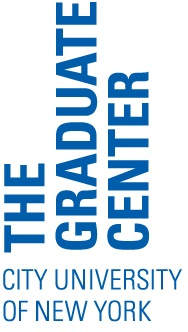How to Write a Cover Letter

Photo by Green Chameleon on Unsplash
In addition to a resume, most job applications will require a cover letter. A cover letter helps you explain why you are the best fit for the job, as well as serves as a writing sample. In a cover letter, you will expand on the skills you identify in your resume, providing concrete examples of how you’ve put them into action. This blog post will break down the parts of a cover letter and offer tips for how to successfully write one.
Parts of a Cover Letter
Your Contact Information
Similarly to your resume, your cover letter should include contact information so that a hiring manager can easily get in touch should you be selected for an interview. Your contact information can be placed in a header, or it can be aligned on the left-hand side of the page as it would be in a formal letter.
The Company’s Contact Information
Beneath your contact information, you should provide the name of the company, along with its address.
The Date
Beneath the company’s name and address, you should provide the date on which you wrote the letter.
A Salutation
Before you jump into the bulk of your cover letter, you should include a salutation, typically in the form of “Dear [Name].” Try to avoid generic salutations like “Dear Hiring Manager” or “To Whom It May Concern.” While better than nothing, finding an exact name shows more effort. Doublecheck the job ad to see if a specific hiring manager is listed. If not, there are alternative ways of finding this information. For example, if the ad says this position will report to someone such as the “Director of Marketing,” you can probably look up who the Director of Marketing is on the company’s website. You could also contact Human Resources or, if there’s an email address listed for questions about the position, you could ask who the hiring manager is that way.
Introduction Paragraph
Your introduction paragraph should begin with a strong opening line, which gives a sense of who you are, the name of the position to which you’re applying, and information as to where you heard about the job. Many people are tempted to begin a cover letter with “My name is ______;” however, there are much more powerful ways to start. Think about how you might hook your reader by leading with compelling information as to who you are as an employee. For example, you might start off with something like, “As a quantitative researcher with six years of experience, I am excited to submit my application for the position of ______ as advertised in ________.” The hiring manager reading your cover letter will be more interested in what type of work experience you bring to the table than in your name or a more generic opening line.
Each paragraph of your cover letter should be kept short (3-5 sentences), and it’s okay if your introduction is even shorter (2-3 sentences). After your opening line, the next sentence or two should prepare your reader for what’s to come by identifying two or three skills you possess that you will be addressing in your body paragraphs.
Body Paragraphs
Your cover letter should contain at least two short body paragraphs that provide concrete examples of your skills in action. Try not to repeat information from your resume word for word—this is missing out on an opportunity to give your potential employer information that they couldn’t glean from a simple list of skills or responsibilities you’ve had. If you say you’re a strong researcher, explain a project you worked on and how you moved it from start to finish. If you claim to be a great problem solver, what’s an example of a problem you solved? If you want the employer to know you work well in teams, give an example of a time you worked on one and how it went.
Be sure that the skills you’re highlighting are the skills most relevant to the position at-hand. You can ascertain this by identifying keywords and skills from the job ad—either from the description itself or from the list of desired qualifications—and making sure to include them in your letter. While it’s likely that you have developed many skills over the course of your graduate-level studies, emphasize the ones the employer says they need. Connect your skills to how they could benefit the company, focusing your cover letter on what you can do for the employer rather than vice versa.
Conclusion Paragraph
In your conclusion, reiterate your interest in the position and express your desire to discuss your fit further. In your first sentence, consider identifying something you would look forward to accomplishing through the position. For example, you might say something like: “At [Name of Company], I would look forward to using my skills in data science to further your mission of achieving socioeconomic equality for all.” You should then thank the person reading your cover letter for their time and state that you would welcome the opportunity to discuss your qualifications further.
A Sign-Off
To complete your cover letter, include a sign-off such as “Sincerely” followed by your signature and name.
Additional Tips
Length
Your cover letter should be roughly one page, and never more.
Tailor Your Cover Letter to Each Position
Hiring managers can tell when you’re using a generic cover letter. While it can be helpful to have a “template” to use as a start, you should always tailor it to the position to which you’re applying by including keywords from the job ad.
Have Someone Else Proofread Your Work
Proofread your work to the best of your ability, then have someone else proofread it, too. They may catch mistakes you miss.




